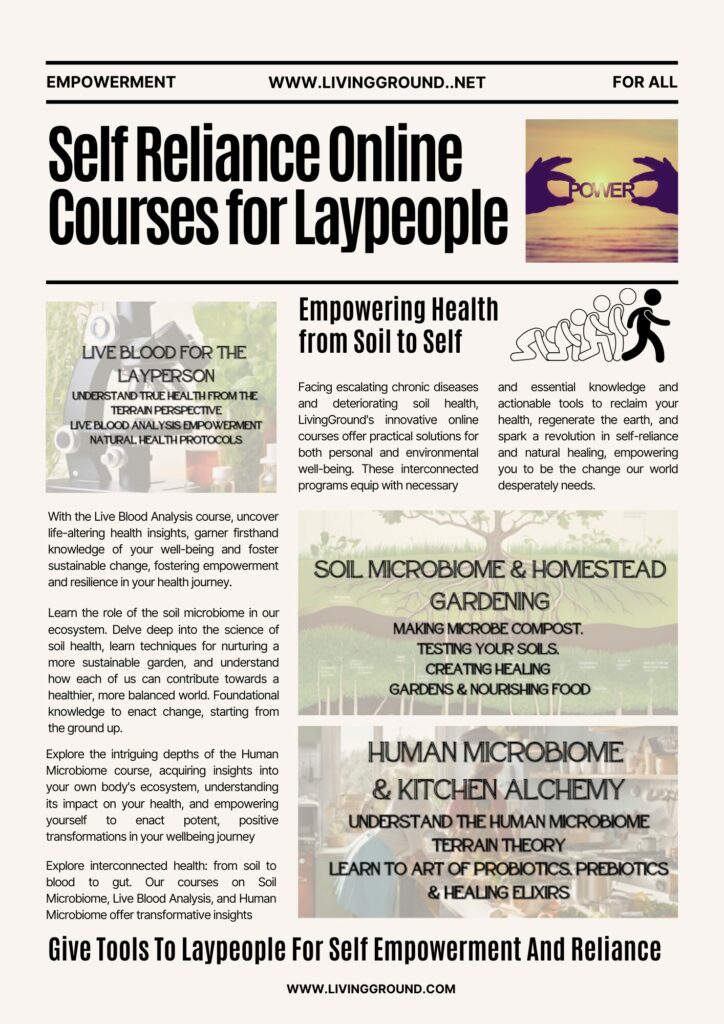Beneath our feet lies a complex world of soil microbes engaged in intricate “belowground politics.” These tiny organisms form alliances, communicate, negotiate, and sometimes even sabotage each other’s efforts, offering profound lessons for human society. This underground realm unveils fascinating dynamics that can reshape our understanding of both natural and human-made systems.
In the soil, microbes engage in a delicate dance of cooperation and competition, much like human societies. Mycorrhizal fungi, for instance, form extensive networks reminiscent of our global communication systems, sharing resources and information across vast distances. These “Wood Wide Webs” demonstrate the power of collaboration, showing how interconnectedness can benefit entire ecosystems. Similarly, nitrogen-fixing bacteria act as nature’s philanthropists, converting atmospheric nitrogen into forms that plants can use, showcasing the importance of altruism in community building.
However, the soil is not always a utopia of cooperation. Microbes also compete fiercely for limited resources like carbon and nitrogen, mirroring economic competition in human markets. Some even produce antibiotics to inhibit competitors, analogous to corporate strategies to outmaneuver rivals. This balance of cooperation and competition creates a dynamic, resilient ecosystem – a lesson for human societies striving for stability and growth.
The predatory relationships in soil, such as protozoa grazing on bacteria or fungi consuming other microbes, may seem brutal. Yet, these interactions play crucial roles in nutrient cycling and maintaining ecological balance. This offers insights into the complex nature of societal structures and the sometimes counterintuitive ways in which different elements contribute to overall health and stability.
Understanding these microbial interactions provides practical strategies for sustainable agriculture. Cover crops and organic amendments can be seen as diplomatic missions, introducing beneficial microbes and fostering positive relationships in the soil community. Minimizing tillage preserves the delicate structure of the soil, akin to protecting important cultural or social institutions. Crop rotation, meanwhile, acts like a policy of diversity and inclusion, ensuring a varied and resilient microbial population.
The parallels between soil and human microbiomes are particularly striking. Our bodies, like soil, host diverse communities of microorganisms essential to our health. This realization fosters a deeper appreciation for the interconnectedness of all life and our role as stewards of these invisible yet crucial allies. It challenges us to view our bodies not as isolated entities, but as complex ecosystems requiring careful management and balance.
Moreover, the soil food web offers lessons in community building and social structures. The way different microbes cooperate to break down organic matter or defend against pathogens provides models for human collaboration and mutual defense. The resilience of diverse microbial communities in the face of environmental challenges offers insights into the importance of diversity in human societies.
As we face global challenges in soil health and environmental sustainability, the lessons from soil microbes become increasingly relevant. They teach us about the importance of balance, diversity, and interconnectedness in creating resilient systems. By learning from these underground diplomats, we can develop more sustainable agricultural practices, build more harmonious communities, and foster a deeper connection with the natural world.
The soil food web also challenges our perception of intelligence and decision-making. The complex behaviors and interactions of soil microbes, despite their lack of a central nervous system, prompt us to reconsider our definitions of intelligence and consciousness. It suggests that collective behaviors and distributed decision-making can lead to remarkably sophisticated and adaptive systems.
The study of soil microbes reveals the power of symbiosis and mutualism. Many microbes form mutually beneficial relationships with plants and other organisms, demonstrating how cooperation can lead to evolutionary success. This offers a counterpoint to the often-emphasized competitive aspects of natural selection, suggesting that collaboration can be just as crucial for survival and thriving.
The politics of the soil food web offer a rich tapestry of lessons for human society. From diplomacy and resource management to community building and environmental stewardship, soil microbes provide models for creating more sustainable, resilient, and harmonious systems. By understanding and applying these lessons, we can not only improve our agricultural practices but also gain insights into creating better human societies and a more balanced relationship with our planet.
For those interested in delving deeper into this fascinating world, the Soil Microbiome & Homestead Gardening course offers a unique blend of practical wisdom and cutting-edge science. Drawing from 30 years of homestead gardening experience and insights from Dr. Elaine Ingham’s Soil Food Web Consultancy, this comprehensive course provides a deep dive into the world beneath our feet. It explores cooperative, competitive, and predatory relationships among soil microbes, teaches practical strategies for harnessing their power, and examines the parallels between soil and human microbiomes. By learning from soil microbes, participants gain not just gardening skills, but a profound understanding of our place in the web of life.





